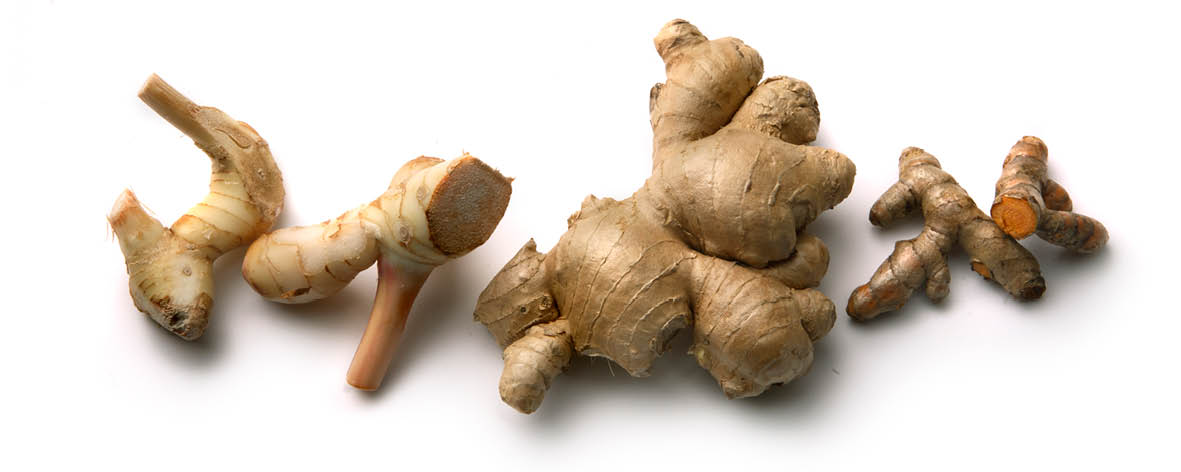All you need to know … about turmeric, galangal and ginger

Often displayed side-by-side in our fruit and vegetable displays, turmeric, galangal and ginger look quite similar but have different uses and properties. Find out when to use which for maximum flavour, and some additional health benefits as a bonus!
Turmeric, galangal and ginger are all tuberous rhizomes. Knobbly in appearance and coming in hues of pale yellow to orange, they all feature heavily in Asian and Indian cooking. They are used to flavour food, as well as being highly valued for their medicinal properties.
Ginger
Extremely versatile, ginger is pale cream in colouring and has a slightly darker tan skin. It has a fresh, sweet-yet-spicy taste and a woody aroma. Ground ginger, used in baking, has a very different taste to fresh ginger and should not be used as a substitute in cooking.
Uses:
· in stir fries – add a fresh zing by grating in some ginger
· soup – grated or minced, ginger adds warmth to pumpkin, carrot or sweet potato soups
· as a tea to ward off colds - add a few slices to boiling water, and add lemon and honey
Healthy because:
· it assists and speeds up digestion
· helps with nausea
· improves immunity
Galangal
Galangal grows throughout South-East Asia and is popular in Thai cooking. It is sharper, spicier, and slightly more peppery or pine-like in flavour, with notes of citrus. It has a cream-coloured skin tinged with pink, and like ginger, should be grated or very thinly sliced.
Uses:
· in Indonesian satay, Malaysia laksa or samlor kor ko (a Cambodian vegetable soup).
Healthy because:
· it is an anti-inflammatory
· improves immunity
· may assist male fertility
· supports digestion
· has cancer fighting properties
Turmeric
Turmeric has bright orange flesh and a subtle earthy flavour. Dried turmeric is the spice responsible for the yellow hue of some Indian food and is the primary spice in curry powder. Fresh turmeric is brighter, more aromatic, and a bit less bitter than its powdered form. Due to its health giving properties, turmeric has become extremely popular recently and is easily added to many foods to boost their nutritional value.
Use in:
· smoothies – to your regular smoothie add 1-2 teaspoons of powdered turmeric, plus some coconut oil and a shake of black pepper for better absorption
· any curry, soup or rice dish – it will also add a pop of colour
· ‘golden pancakes’ - add ½ teaspoon of ground turmeric to your dry pancake mix. The colour is amazing!
· ‘golden milk’ – combine 2 cups milk of your choice with 1 teaspoon ground turmeric, a tablespoon of maple syrup, a quarter of a teaspoon cinnamon, half a tablespoon of coconut oil and a pinch of black pepper in a saucepan and warm on the stovetop
· Tea - add a quarter of a teaspoon of ground turmeric to your cup before pouring in the hot water. You can also combine ground turmeric with hot water for a tisane.
Healthy because:
· Turmeric contains the active compound curcumin, a powerful anti-inflammatory and antioxidant
· it lowers cholesterol and has anti-cancer properties
· is being studied for its possible positive effects on the progression of Alzheimer’s disease

